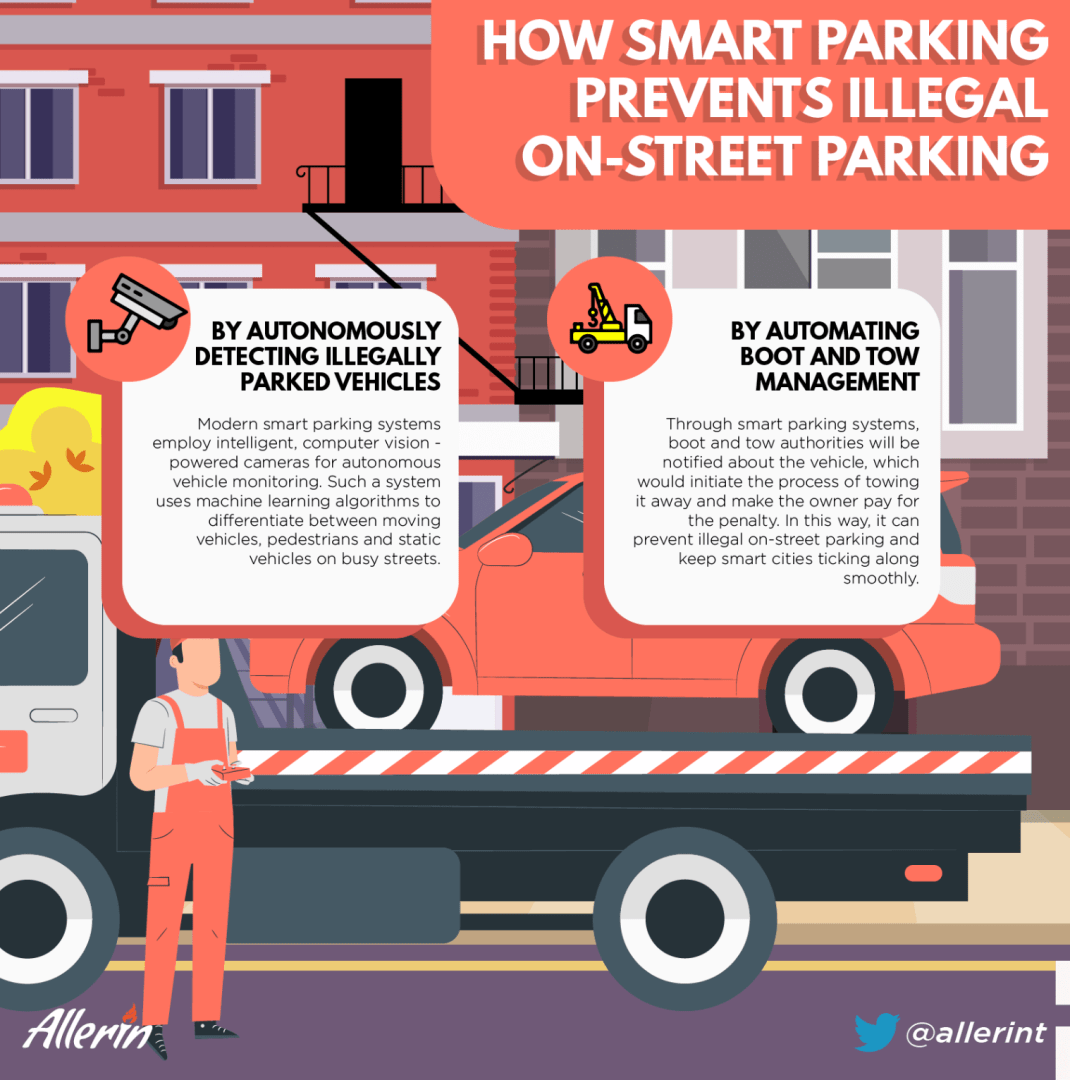
How Smart Parking Prevents Illegal On-Street Parking
Understaffed personnel in smart cities may cause the parking patrol there to get overwhelmed very quickly while carrying out their jobs.
Fortunately, smart parking systems have advanced to the point where they can autonomously address problems such as illegal on-street parking in such zones.
Police understaffing is a problem that affects all kinds of law enforcement operations in towns and cities across the US. A recent study found that approximately nine in ten police departments in the US are short on personnel. One of the primary departments out of those are parking enforcement authorities and the traffic police. Understaffing in such departments can become problematic in multiple ways—poor pollution management, poor permit management in parking facilities, incompetent accident control, and poor handling of parking violation instances, amongst others. Arguably, illegal on-street parking is the biggest problem that stems from the lack of adequate staff to prevent it. AI and computer vision offer solutions to resolve this issue.

Smart parking and smart city technology, driven by AI and computer vision, offer the solution in this scenario. Already, smart city tech is highly useful for accident prevention and parking management. In a similar vein, AI-based smart parking and traffic management tools can assist the authorities with tackling on-street parking issues.
1. Autonomously Detecting Illegally Parked Vehicles
Modern smart parking systems employ intelligent, computer vision-powered cameras for autonomous vehicle monitoring. Such a system uses machine learning algorithms to differentiate between moving vehicles, pedestrians and static vehicles on busy streets. As a result, if it detects that a vehicle is illegally parked alongside a pavement (or a no-parking zone) and, as a result, is blocking the traffic or movement of pedestrians, it will let the owner of the vehicle know via multiple warnings. If that does not clear the situation, then the nearby law enforcement officers will get the information about the illegal parking.
2. Automating Boot and Tow Management
Additionally, boot and tow authorities will be notified about the vehicle. This would initiate the process of towing away the vehicle to a nearby municipal office and leaving its owner to pay the penalty to get their vehicle back.
In this way, even in places where the law and parking enforcement officers are fewer in number, smart parking systems can detect and prevent illegal on-street parking and keep smart cities ticking along smoothly.
Trending
-
1 How Does SaaS Differ From IaaS And PaaS?
Fabrice Beaux -
2 Single Page Applications vs Multi-Page Applications
Fabrice Beaux -
3 Top 7 Effective Strategies for Multi-Language Website Development
Fabrice Beaux -
4 Boost Engagement to Infinity and Beyond: Unleashing AI-Driven Support
Anas Bouargane -
5 The Cheapest And Most Beautiful Stickers in CS2
Daniel Hall





Comments